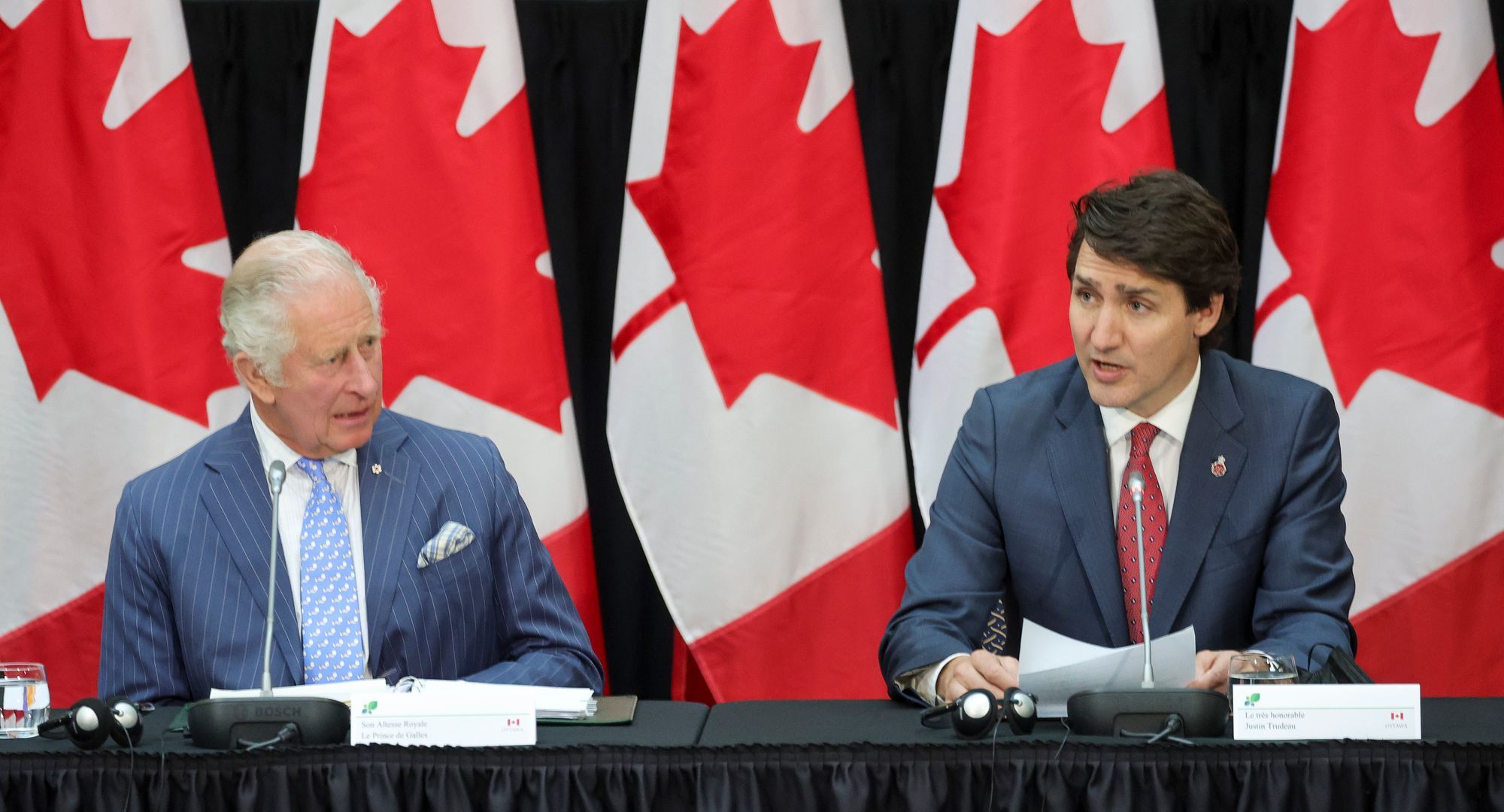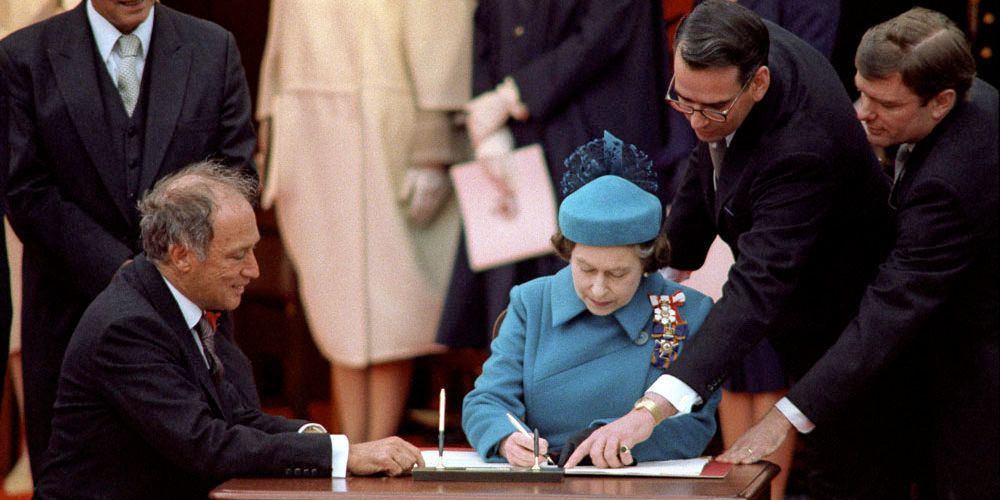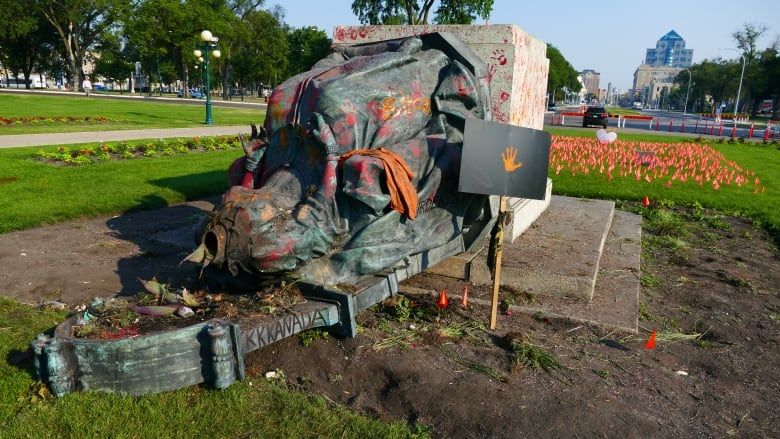Queen Elizabeth II led a life of decency and duty to her royal domain, navigating through the most turbulent and peaceful of waters. The Queen carried herself with confidence in a way that reassured her Britain for seventy years that, in the end, they forever will have their Queen.
Nevertheless, a different story was told in her Commonwealths, which shrank substantially in size during her reign. For her Commonwealths, spanning six continents all over 1,000 miles from Buckingham Palace, the Queen’s death marked the end of a chapter in their histories. Leaving many of them aspiring that this next chapter will serve as the conclusion to the reign of a self-proclaimed righteous monarchy.
In Canada, her largest commonwealth nation, the Queen graced coins, bills, highways, buildings, and streets. Although, she was a distant figure, last visiting the country in 2010, where only 55 percent of citizens would voice support for the Queen as their rightful Head of State in the years that followed.
Even as her Commonwealths voiced disapproval, since the dawn of her reign, Queen Elizabeth II declared: “My whole life, whether it be long or short, shall be devoted to your service.” She fulfilled this pledge by meeting weekly with British Prime Ministers and opening all but three sessions of the British Parliament, the last being in 2019. A harsh contrast to her life of service in Canada, during which the Queen last opened the Canadian Parliament in 1977 for Prime Minister Pierre Trudeau, the father of current Prime Minister Justin Trudeau.
Two days before God claimed the Queen she continued to fulfill the duty she felt was owed to Britain, swearing in the United Kingdom's 56th Prime Minister, Lizz Truss. It was one of the many actions that proved the Queen's loyalty and faithfulness to serving the British people. Queen Elizabeth II was genuinely Britain's Queen, but as Canada’s Queen, she was a fading unpopular symbol of an outdated institution with a disgraceful colonial past.
On the morning of September 8, 2022, Britain was rocked to its core by a tragic, yet not entirely unexpected death. Britain had a new sovereign, a new king: King Charles III. That somber morning nearly 5,000 kilometers away from Balmoral Castle in Canada, Prime Minister Justin Trudeau was informed that he had a “new boss”, and with that Canada had a new Head of State.

The Rise of a New Monarch
The ascension of King Charles III exposed the monarchy’s many wounds of colonial crimes, and his lack of relevance to Canadians as a white, foreign, privileged, English-speaking man reignited a fury of debate amongst Canadians. It has left the nation questioning if the time has come to cut ties with the monarchy and abandon a current system of government that elevates the Royal Family to the helm, despite it being an inaccurate depiction of Canada—one of the world’s most diverse and multilingual nations.
The system of government Canada follows that props up a leader who inaccurately mirrors the nation is common practice amongst British Commonwealths. It is called a Constitutional Monarchy, where the Crown, presently King Charles III, is the sovereign authority. The Crown is granted the power to govern and rule Canada but chooses to entrust this responsibility of governing, temporarily, to the Prime Minister. This system places the Crown above politics and democracy bestowing them as the source of power in Canada’s three branches of government.
Although today, the Crown chooses not to exercise its far-reaching and prerogative powers, that allow them to veto bills and dismiss a Prime Minister or Parliament, in the interest of moving the royal institution towards becoming purely symbolic. They have surrendered nearly all of their power to the democratically elected Prime Minister, and on the rare occasion the Crown does make a decision it is always based on the recommendation and advice of the Prime Minister. Thus, decisions made or announced by the Crown are a continuation of tradition rather than political practice. Some Canadians find comfort in this historical practice, while many regard the situation boiling down to the provocative fact that Canada's Head of State, and Commander in Chief is not even a Canadian citizen.

From a Colony to a Commonwealth Nation
In the late 17th century countries like the United States and France expressed deep disaffection for monarchies leading them to ditch the archaic practice when crafting their constitutions, thus becoming republics. However, in Canada monarchism played a crucial role in developing the country. In 1867, when Canada became a dominion, with approval from Queen Victoria, the young nation won self-government. It was in a restricted form, nevertheless, they opened their first session of parliament that year; an occasion the then Queen was invited to open but did not attend. Over the next century, Canada’s connection to the monarchy was emboldened, and it became a distinguishing feature of Canada, separating it from its anti-monarchist neighbors to the south. The British dominion acted as a country with financial and partial military independence, though it was still under British rule without full legislative freedom, until 1931.
In 1931, Canada made a major stride forward via the Statute of Westminster. The young nation gained the right to be seen as a commonwealth equal to England, commencing the country’s decades-long self-discovery search. Over the next 30 years, Canada formed an identity, separate from Britain and the Crown, adopting its own patriotic national anthem, and abandoning the Union Jack for its red maple leaf flag.
51 years later in the spring of 1982 Canada had its greatest triumph where the nation was brought as close as it will likely ever come to full sovereignty. Under Prime Minister Pierre Trudeau, Canada patriated the Constitution—removing it from the power and responsibility of the British Parliament. The constitution’s name was altered from the British North America Act to the Constitution Act, effectively minimizing the Crown’s powers to the weight they have today: a symbol with unutilized power. Candidly summarizing the now diminished role of the monarchy in Canada that the Act accomplished, Prime Minister Pierre Trudeau, said “The past is to be respected and acknowledged, but not to be worshiped.”

The Case for True Independence
In Canada, from coast to coast to coast, there are many Canadians prepared for an unsympathetic royal sendoff. Before Queen Elizabeth II’s death, at her platinum jubilee, only a mere 25 percent of Canadians had positive views of Canada’s Constitutional Monarchy. Although more detrimental to the state of the monarchy was that 67 percent of Canadians were against recognizing King Charles III as the nation’s Head of State. This burning sensation to abandon the monarchy that a vast majority of Canadians possess has stemmed from two significant factors: the colonization of French Canadians, and the brutal betrayal of Indigenous people.
French Canadiens and the Monarchy
In 1608, Quebec was founded by French settlers and it became one of the first permanent settlements in the region. The region grew over hundreds of years and became influential in molding modern Quebec City’s architecture and culture. Yet 152 years later La Conquête occurred. In battle the French were forced to surrender to British forces, losing not just territory but a way of life. In the years that followed the British Crown enacted the Royal Proclamation of 1763, which triggered brutal tension between French inhabitants and the Crown. The proclamation was the formal colonization of Quebecers, aimed at the assimilation, and oppression of French speakers, allowing the British to control the economy, replace all French laws, and require inhabitants to swear an oath of allegiance to the King.
For nearly two centuries since then in Canada, Quebecers have fought against assimilation laws launching a Quebecois nationalism movement that earned the province recognition as a distinct nation within Canada in 2006. Nevertheless, the actions forever stained the Crown’s image in Quebec. In 1964 during a state visit, Queen Elizabeth II was greeted with jeers and boos, and following her death, there was a lack of sympathy within the province. Quebec politicians objected to the lowering of the flag for a period of mourning, and a Member of the Quebec Legislative Assembly stated they “should not treat the Queen of England as head of the Quebec state, nor give credibility to an illegitimate British colonial regime in Quebec.” It comes as no surprise to experts that recent polls show 71 percent of Quebecers, including English speakers, would prefer to see Canada abolish the role of the monarchy.
Indigenous People and the Monarchy
Canada for over a decade has been taking meaningful strides in terms of reconciliation with Indigenous people, but remains aware there is more to be done. King Charles III and the position of the Crown have been viewed as a roadblock in this conversation for decades leading to Canadians calling for ties with the monarchy to be severed.
The deep history between Indigenous people and the Crown originated when the two groups signed land treaties in the 1700s. George Lafond, a former treaty commissioner said that this relationship left the Indigenous population believing that the Crown would be in their corner if the Canadian government took mal action against them. This was not the case. When the Canadian Government formed Residential Schools that encouraged forced assimilation with the goal to “kill the Indian” and “save the man.” 114 years passed and the Crown never intervened or advocated on the behalf of the, roughly, 150,000 Indigenous children. Instead, the Crown created an erosion of trust with Indigenous people by empowering systemic racism during the creation of Canada, lasting deep into the 1970s through Queen Elizabeth II’s neglect towards Indigenous leaders. Scholars say the Queen would promise action on Indigenous leaders' desperate pleas for help during her visits to Canada, but would not follow through with action on the issue. The catastrophic case of malpractice under the Queen’s reign allowed for “cultural genocide” to be committed in Canadian residential schools for 44, in turn generating thousands of unmarked graves of Indigenous children. Today outrage and frustration with the Crown are being exhibited throughout Canada leading to statues of royal figures being toppled, and a renewed rally around the Indigenous community calling for the removal of the Crown, an unwilling participant in Canada’s path towards truth and reconciliation.

Breaking Free
The Canadian public is overwhelmingly in favor of charting its way beyond the monarchy. Commonwealth countries have completed this consequential departure in the past—the most recent commonwealth being Barbados.
Barbados shifted from a commonwealth to a republic in the summer of 2021. The transition was relatively seamless. All references to Her/His Majesty, the Crown, and the word sovereign were removed from the country’s constitution. The Governor General position was abolished with roles being assumed by the President, and all remaining power and property were transferred from the Crown to the state. The transition was completed with ease due to the Barbados constitution only requiring a simple two-thirds majority from the Federal Parliament to make the switch. Barbados has served as a model for commonwealths seeking independence, but they paint an inaccurate picture of the ease such a move requires.
For Canada, severing ties is legally feasible but “virtually impossible” in the words of David Schneiderman, a constitutional law expert. Canada has baked the monarchy into its nation’s constitution and embedded the Crown as a symbol in nearly every aspect of government. One murky avenue exists to transform Canada into a modern-day republic. Canada would have to meticulously revamp their constitution and abide by the amending formulas in Section 41 of the Constitution Act of 1982. The section requires unanimous consent from all 10 provincial legislatures, the federal legislature, and the senate for any changes to be made. Meaning a single person could upend the entire process, making the prospects of events ideally unfolding bleak. Philip Lagassé, a Carleton University professor, put the difficulty of the process into perspective. Lagassé along with many scholars have stated Canada’s prime chance to become a republic would be to convince the United Kingdom to abandon the monarchy—effectively dismantling all constitutional monarchies involving the British Crown.
A Quiet Revolution
When Prime Minister Justin Trudeau paid an emotional tribute to Queen Elizabeth II, with teary eyes he said “she was one of my favorite people in the world,” Pierre Polievre, leader of the Canadian opposition, praised the Queen saying she was the world’s most famous woman. Canada’s most influential leaders and even its citizens admired the Queen as a person, but over the past seven decades, they have created a steep distinction between the Queen herself and the crown she held high. The institution the Queen masterfully masked is a damaged brand plagued with claims of racism, miserable marriages, and an Epstein ally. Now, with King Charles III at the helm, a quiet revolution is brewing. Younger Canadians, French Canadians, Indigenous people, and millions across the country are uniting demanding a Canada reflecting their own image, one that does not bow to a Head of State that comes from a line of tyranny and colonizers. Canadians deserve and are ready for life after the monarchy; all that is left to do is for the Canadian government to just try.





